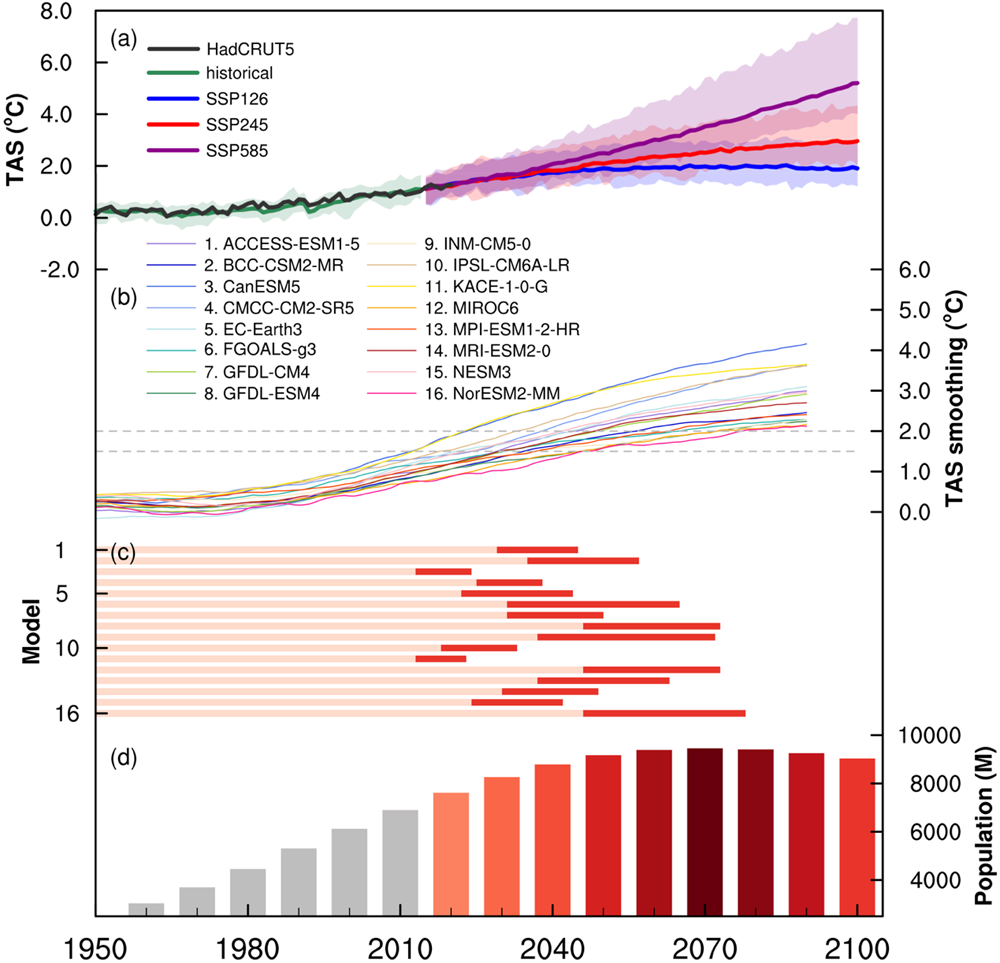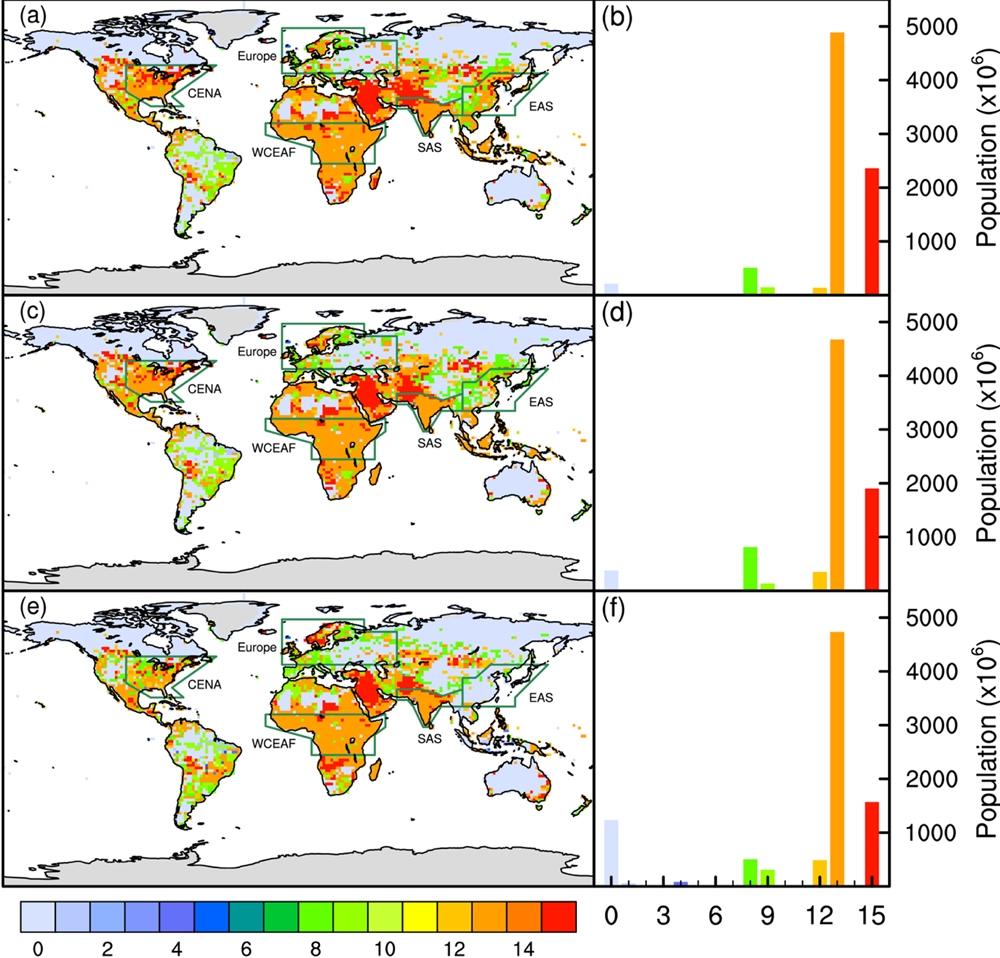Climate-related risks result from changes in climate extremes, as well as changes in global population size and spatial population distribution. Recently, Dr. QIN Peihua from the Institute of Atmospheric Physics (IAP), Chinese Academy of Sciences and his collaborators investigated population exposure to climate extremes with global climate models (Fig. 1) in the Coupled Model Intercomparison Project Phase 6.
Fig. 1 Time series of global surface air temperature and total population, as well as the year when 1.5°C and 2.0°C warming occur. (Image by IAP)
"Global population exposure to climate extreme shows moderate increases under global warming and intensified increases with a higher warming level, with the southern Asia and Central Africa regions mainly contributing to these increases." Said QIN. Due to a population decrease when moving from 1.5°C to 2.0°C warming over eastern Asia, population exposure to extremes is found to decrease slightly.
Fig. 2 Compound indices of increases in population exposure to extremes under different global warming level. (Image by IAP)
According to their study, total population of 1569-2358 million will be increasingly exposed to wet (consecutive wet days), dry (consecutive dry days), heat (summer days) and cold (frost days) extremes at 1.5°C warming, 2.0°C warming and from 1.5 to 2.0°C warming. Additionally, more than two-thirds of total world population might encounter more exposure to all four extremes but the cold extreme during the above periods (Fig. 2).
"Obviously, we should do more to face possible climate risks under global warming," said QIN.
References
Qin, P. H. (2022) More than six billion people encountering more exposure to extremes with 1.5°C and 2.0°C warming. Atmos. Res. Accepted. https://doi.org/10.1016/j.atmosres.2022.106165 .
Media contact: Ms. LIN Zheng, jennylin@mail.iap.ac.cn



